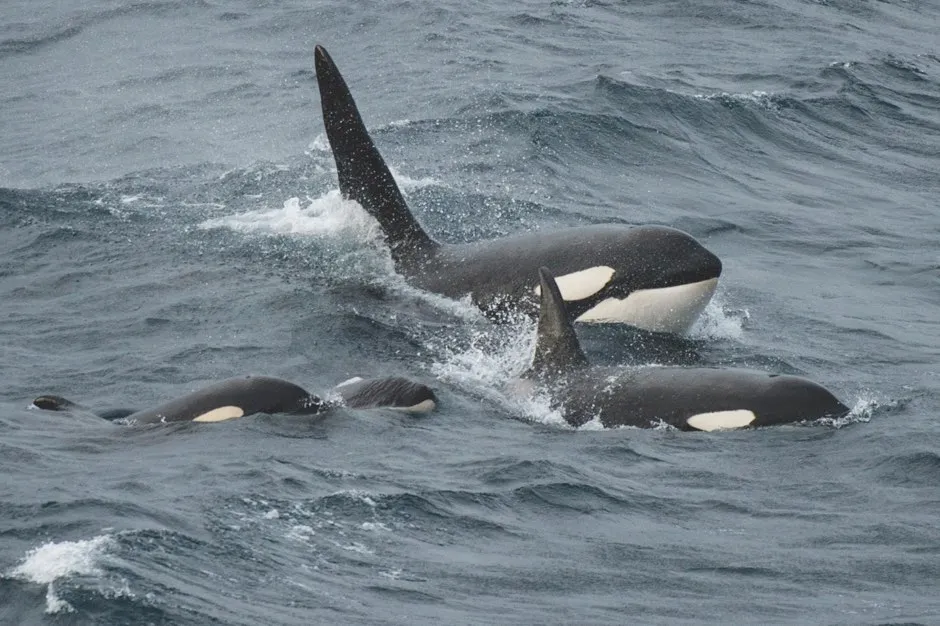Why do whales and dolphins become stranded?
Nearly 5,000 whales, dolphins and harbour porpoises were stranded on shores around the UK in the years 2011-2017, according to a report published in September by the UK Cetacean Strandings Investigation Programme (CSIP), a number which is up 15 per cent from the previous period.
As many cetaceans spend a lot of time at depth it’s hard to measure populations accurately, so we can’t say for sure whether this number of strandings is a threat, but for some pods, such as the eight-strong West Coast Community of orcas near Scotland, the loss of even one or two individuals is bad news.
Read more about whales:
Though 132 of the animals were refloated, many died as a result of human activity, says lead researcher Rob Deaville. “Bycatch and entanglement are the main direct man-made drivers of mortality,” he explains. Whales and dolphins can get caught up in fishing lines and nets, which causes easily identifiable injuries. Ship-strike is another common cause of death that’s readily detectable.
Whales and dolphins can also ‘beach’ as a result of illness, often caused by parasites, starvation or human pollution. “Chemical pollution can cause issues, because some of these contaminants can affect the immune system,” Deaville explains.
Polychlorinated biphenyls (PCBs), for example, were widely used as industrial coolants until they were banned in the 1970s for being carcinogenic. PCBs stick to fatty tissue, so they linger in the food chain, and levels in the ocean remain high.

Several whales were also found with plastic or marine litter in their stomachs, though only one died as a direct result.
Cetaceans are split into two subgroups: baleen whales, which include the blue and humpback whales, and toothed whales, which include dolphins, orcas, porpoises and sperm whales. “All the toothed cetaceans use echolocation as their primary sense. They are primarily acoustic animals and they live in an acoustic environment,” Deaville says.
As a result, they are highly susceptible to noise pollution. Chronic noise from shipping and off-shore wind farms can drive animals away from their usual habitats and into dangerous environments, while sudden, acute noise from explosions, seismic activity or sonar can temporarily deafen them or even cause haemorrhaging in the inner ear.
Naval sonar is particularly damaging. “There are many accounts globally of mass strandings associated with some particular forms of sonar,” says Deaville.
Why do mass strandings occur?
Whales and dolphins are social animals. Many cetologists believe that whales will accompany their ill or injured friends and accidentally end up stranded with them. As a result, mass strandings often contain several otherwise healthy animals.
Where do strandings happen most?
A New Zealand-based study found that herds of whales are most often stranded in areas with the same geography: a long sandy beach with a gentle slope, with a peninsula or cape at one end. “Whales do not strand at random locations,” write the authors.
It’s not clear why this is, although marine biologist W H Dudok van Heel proposed that gentle slopes disrupt the cetaceans’ echolocation. However, more recent studies have shown that the sand kicked up on shallow beaches doesn’t affect how well sound is transmitted.
The North Sea acts as a trap for northern bottlenose whales and Sowerby’s beaked whales. These species migrate southwest from the North Atlantic every year, normally keeping the British Isles to their east.
If any of them travel via the North Sea instead, perhaps because they were chasing prey or got lost, they often end up stranded on east coast estuaries such as the Firth of Forth or the Thames estuary. Earlier this week, a humpback whale died by shipstrike shortly after it was spotted swimming in the Thames.
Why have strandings increased in the UK?
It’s hard to tell. It’s possible that bycatch and pollution have increased pressure on many species, but this is not necessarily the case.
“Yes, there was an increase in strandings, but sometimes an increase in strandings can just mean that there are more of a species out there,” Deaville explains. “In fact, from the point of view of conservation scientists, we’re much more concerned about species that don’t strand where we might expect them to.”
In fact, the true number of strandings may not be increasing at all. In Scotland, there has been a drive to encourage members of the public to report stranded cetaceans they find. It could be that numbers in Scotland are steady, but reporting is more thorough.
Read more fromReality Check:
- Antibiotic resistance: is it really as bad as climate change?
- Peaceful protests: Are non-violent demonstrations an effective way to achieve change?
What do I do if I find a stranded cetacean?
If the animal is still alive, phone the RSPCA/SSPCA. Keep it wet and cool by gently pouring water over it – avoiding the blowhole – if you think it’s too hot, but otherwise keep your distance to avoid making the animal even more stressed. Especially stay away from the tail.
When trained handlers arrive, they may try to refloat a smaller animal. However, cetaceans are used to having water to support their bodies, so beaching can cause severe internal injuries. The animal may re-strand or die a few days after refloating.
If, unfortunately, it has already died, then phone CSIP’s freephone hotline: 0800 6520333.
Visit the BBC's Reality Check website at bit.ly/reality_check_ or follow them on Twitter@BBCRealityCheck
